With their vivid plumage and clever, gregarious disposition, macaws are among the most colorful and appealing parrots. These majestic birds inhabit various regions, thriving in diverse habitats ranging from dense rainforests to open savannas. Macaws are beautiful and vital to their ecosystems, with their powerful beaks, huge wingspans, and vibrant feathers. This article will cover macaws’ behaviors, habitats, and rarity, from common species to rare gems.
Blue-and-Gold Macaw (Ara ararauna)
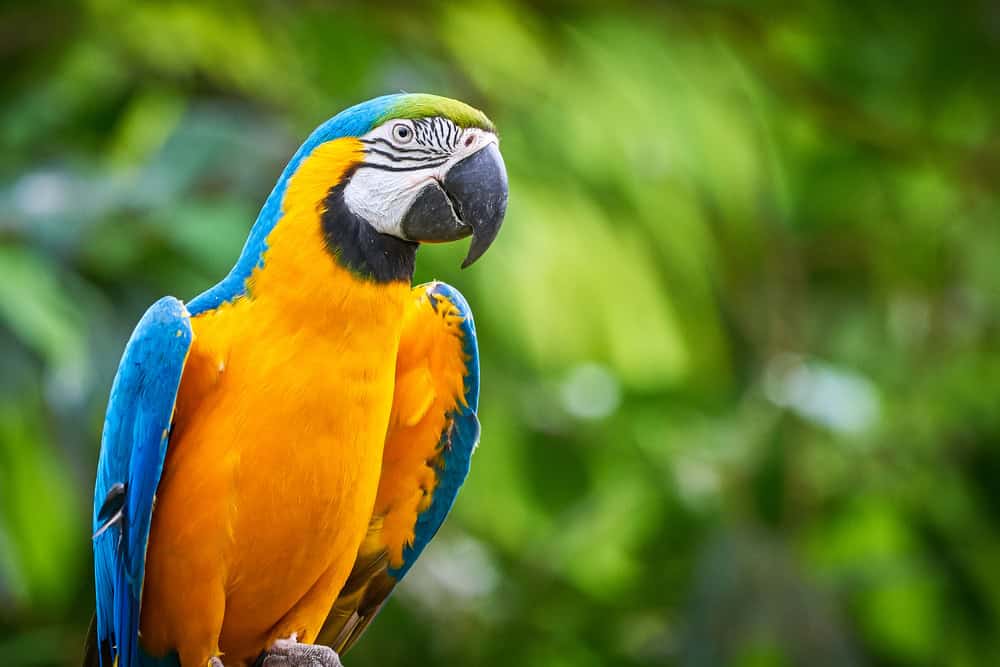
Known for their vibrant blue and golden-yellow plumage, Blue-and-Gold Macaws (76–86 cm) are social and intelligent birds. Originating from South America, specifically Venezuela, Brazil, Bolivia, Paraguay, and Argentina, these common macaws have strong beaks capable of cracking nuts and seeds. Rainforests are home to pairs or small flocks of them that climb and play with toys. Known for their beautiful colors and fascinating personalities, they are vocal and can mimic human speech, making them popular in aviculture.
Scarlet Macaw (Ara macao)
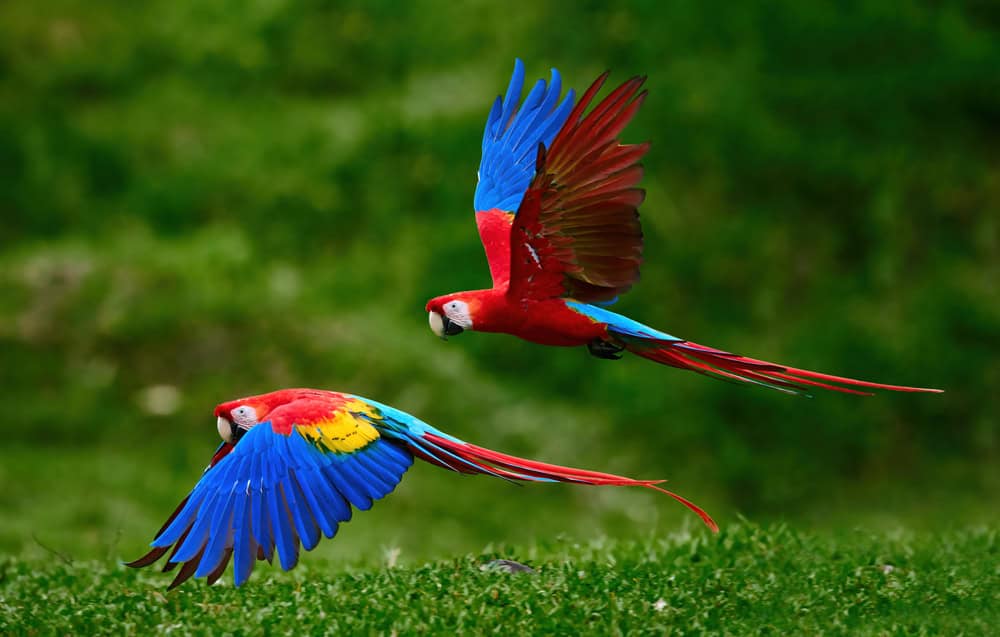
The Scarlet Macaw, one of the world’s most colourful birds, is 81–96 cm long and has vibrant red, yellow, and blue feathers. These common macaws originate from Central and South America, ranging from Mexico to Peru and Brazil. Highly social, they are often seen in large flocks and are known for their loud calls. Inhabiting lowland rainforests, they prefer areas with abundant fruit trees. Curiosity and playfulness are key traits, and they typically engage in various activities, adding vibrancy to their environment.
Military Macaw (Ara militaris)
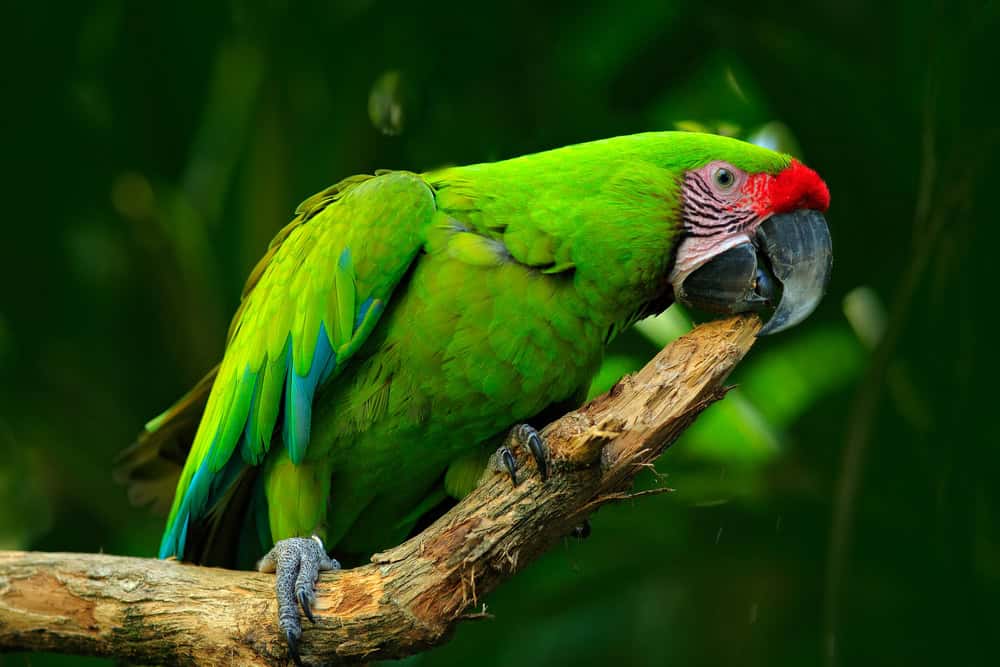
Military Macaws, with a body length of 70–75 cm, are gregarious birds that enjoy living in groups. Originating from Central and South America, including Mexico, Colombia, and Bolivia, these common macaws have distinctive green feathers with a blue tint on the flying feathers and a red forehead. Known for their strong flying abilities, they inhabit humid and subtropical woodlands. Despite their vocal nature, they possess a gentle demeanor. Skilled climbers, they often use their beaks as a third limb to navigate through treetops.
Green-winged Macaw (Ara chloropterus)
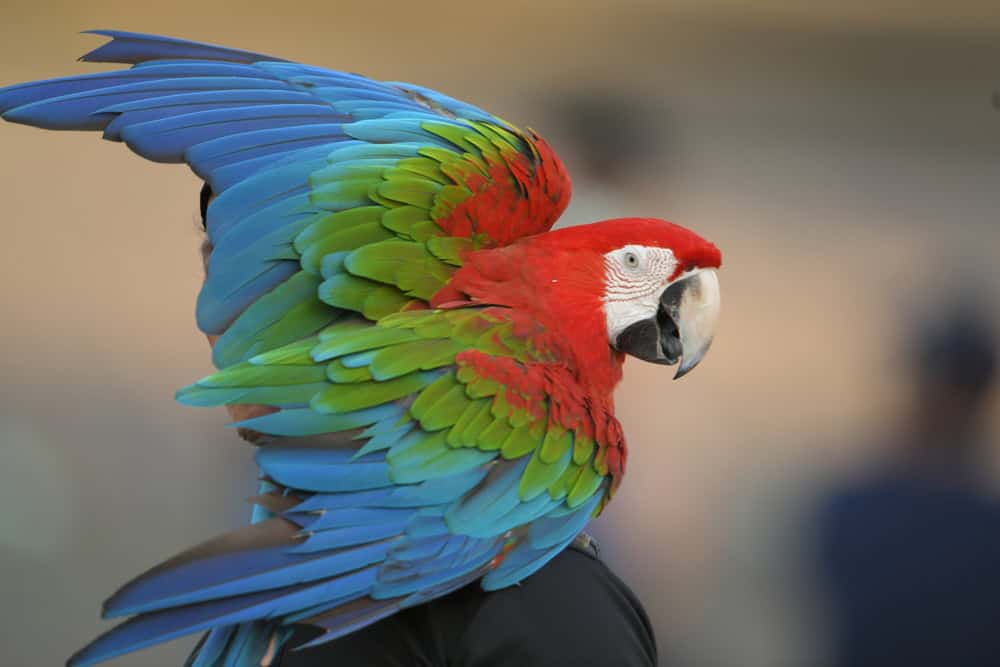
The Green-winged Macaw, measuring 90–95 cm, boasts striking red feathers on its head, neck, and shoulders, with green wings that turn blue at the tips. As the second-largest macaw species, they are common in South America, including Colombia, Venezuela, Ecuador, and Brazil. Known for their kind disposition and strong mate relationships, Green-winged Macaws have small feathers that form red lines around their eyes. Strong fliers, they can cover large distances in search of food, making them a captivating sight in the wild.
Red-fronted Macaw (Ara rubrogenys)
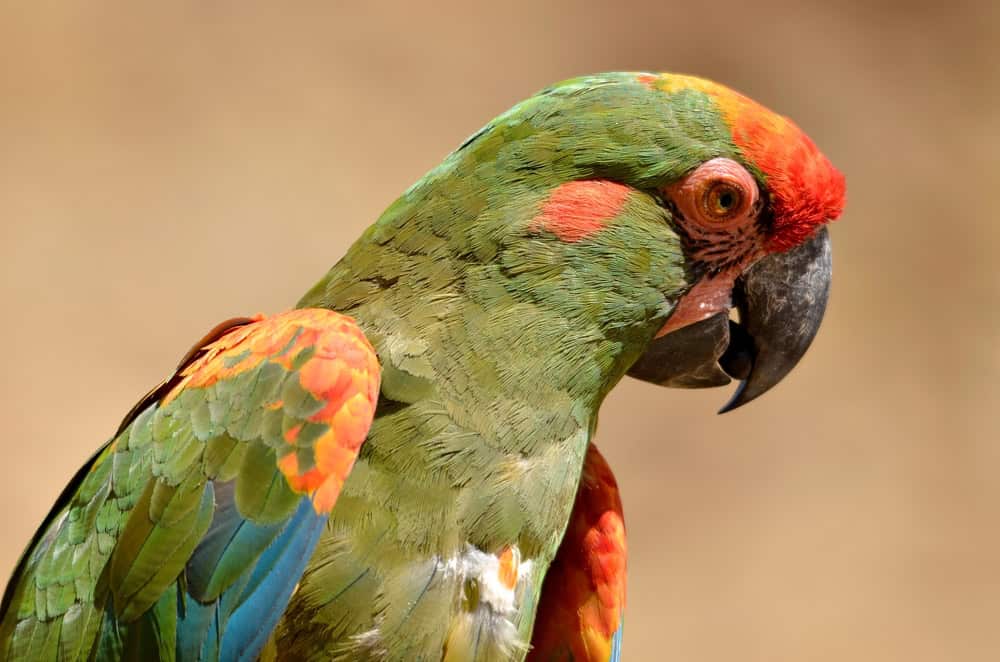
The Red-fronted Macaw, native to Bolivia, is a common species with a body length of 55–60 cm. Recognizable by its green body, red forehead, and orange underwings, this smaller macaw thrives in dry, open woodlands and scrublands. Known for their playful behavior and strong pair bonds, these birds are highly active and require plenty of space for flying and climbing. They are also highly vocal, using a variety of calls to communicate with their flock.
Severe Macaw (Ara severus)
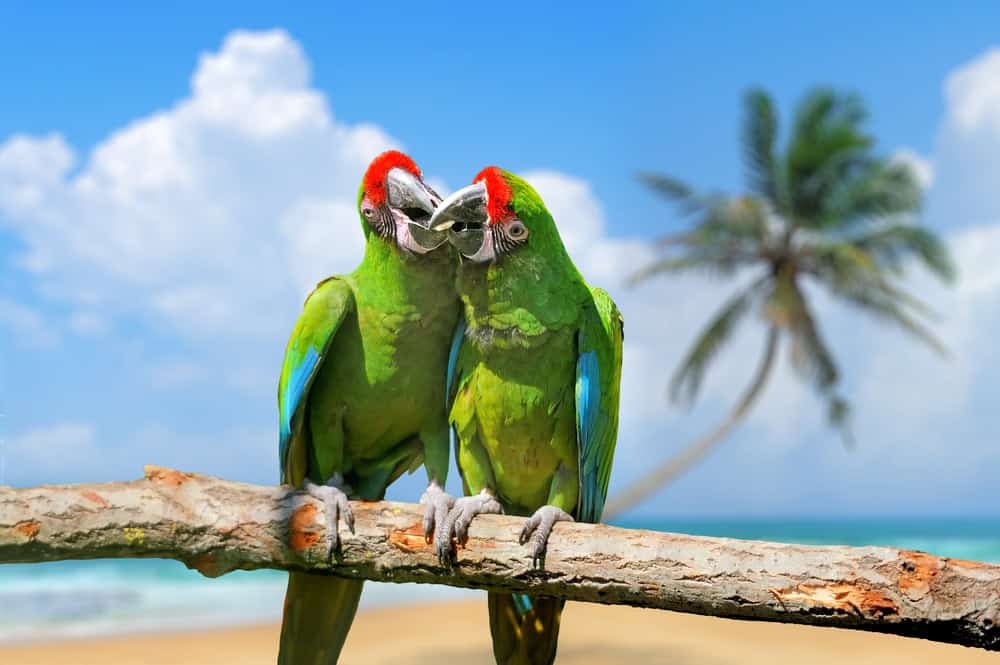
The Severe Macaw, also known as the Chestnut-fronted Macaw, is common in Central and South America, ranging from Panama to Bolivia and Brazil. Measuring 45–50 cm in body length, these macaws are distinguished by their blue flight feathers, green body, and chestnut brown patch above the beak. Thriving in forested areas, they are highly social and often seen in pairs or small flocks. Their lively and curious nature makes them excellent mimics, capable of learning to imitate human speech and sounds. Severe Macaws require plenty of mental stimulation and enjoy playing with various toys.
Yellow-collared Macaw (Primolius auricollis)

Native to Brazil, Bolivia, and Paraguay, the Yellow-collared Macaw is a common species with a body length of 38–42 cm. These small macaws are primarily green with blue flight feathers and a distinctive yellow band around the back of their necks. They inhabit forest edges and savannas, where they exhibit a playful and affectionate nature. Very active, they enjoy climbing and flying, and are also skilled mimics, capable of learning a variety of sounds and words.
Hyacinth Macaw (Anodorhynchus hyacinthinus)
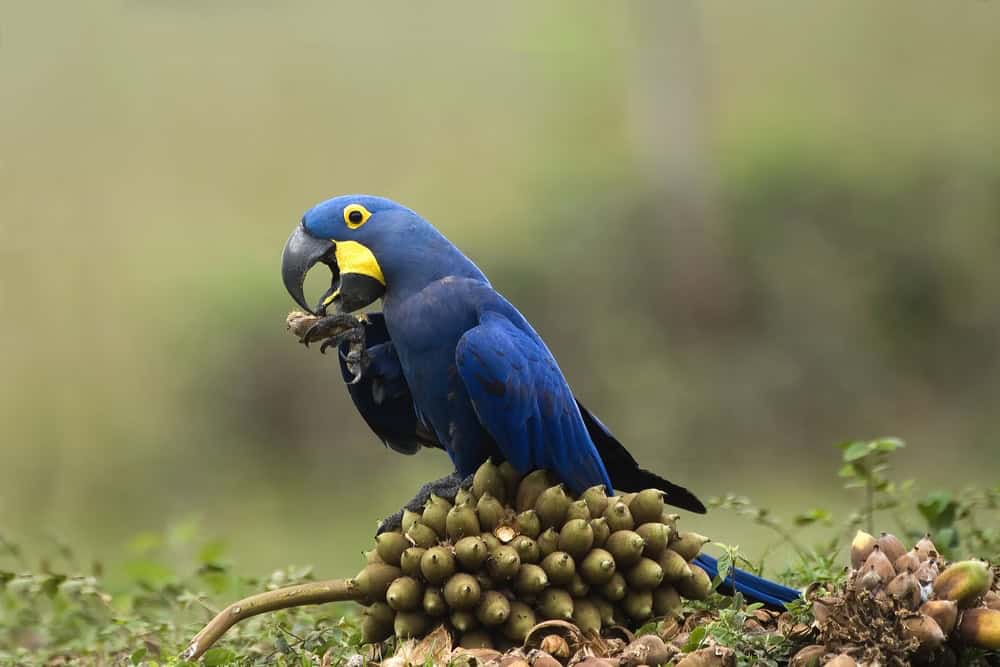
Renowned for their striking cobalt blue plumage and yellow eye rings, Hyacinth Macaws are the largest of all parrots, measuring 75–80 cm in body length. Originating from South America (Brazil, Bolivia, and Paraguay), they inhabit palm swamps and forests. Known as gentle giants, these macaws have a friendly disposition and are highly intelligent, requiring plenty of mental stimulation. They form strong bonds with their mates and are often seen preening each other. However, Hyacinth Macaws are rare and vulnerable, primarily due to habitat loss and illegal trapping.
Blue-throated Macaw (Ara glaucogularis)
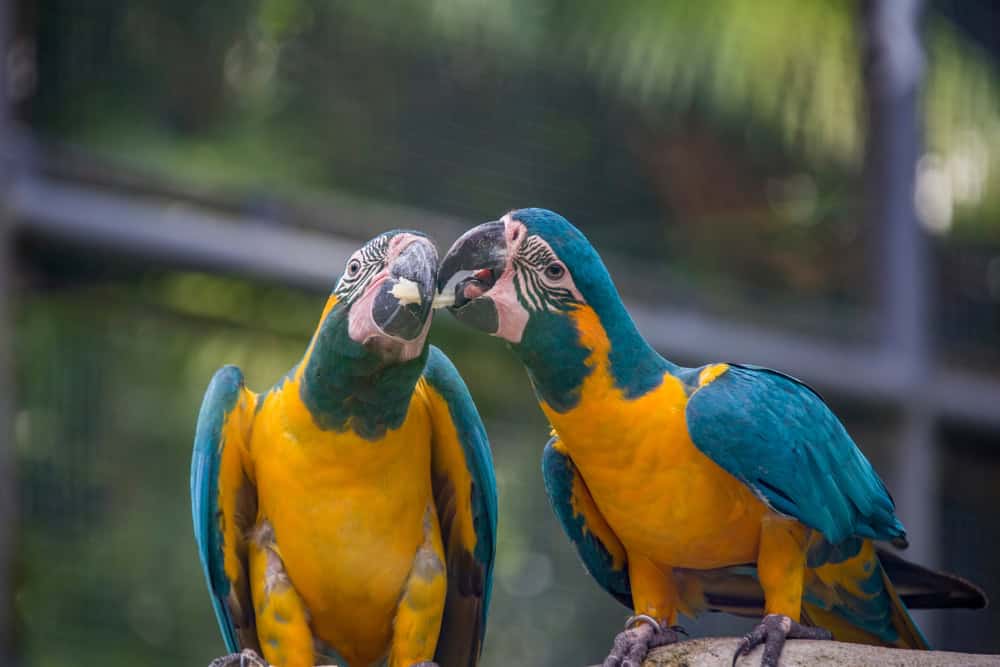
With a stunning blue throat and a combination of blue and yellow feathers, Blue-throated Macaws are elegant birds measuring 38–42 cm in body length. They prefer palm groves and savannas in South America (Brazil, Bolivia, and Paraguay). Known for their gentle demeanor, these birds are highly intelligent and require plenty of mental stimulation. They form strong bonds with their mates and are often seen preening each other. Blue-throated Macaws are critically endangered, making them very rare, with very few individuals left in the wild.
Lear’s Macaw (Anodorhynchus leari)

Although smaller than the Hyacinth Macaw, Lear’s Macaws, measuring 75–80 cm in body length, have brilliant blue feathers and a yellow beak patch. They prefer dry forests and cliffs in Brazil. These macaws are highly intelligent and require plenty of mental stimulation. They form strong bonds with their mates and are often seen preening each other. Lear’s Macaws are strong fliers, capable of covering large distances for food. They are very rare and endangered due to habitat destruction and the illegal pet trade.
Spix’s Macaw (Cyanopsitta spixii)
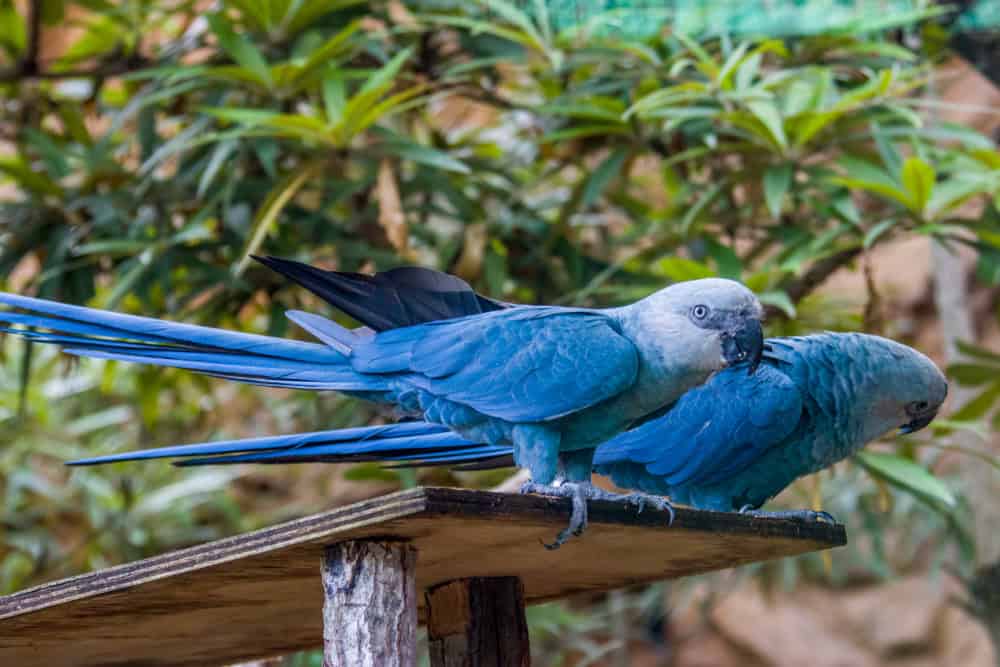
Spix’s Macaw, known as the Little Blue Macaw, has remarkable cobalt blue plumage, paler blue underparts, and a greyish face. Originating from Brazil, these macaws measure 45–56 cm in body length. They are known for their intelligence and playful nature, often engaging in acrobatic displays. Spix’s Macaw was declared extinct in the wild in 2000, with the last known wild individual disappearing from its natural habitat, making it the rarest macaw in the world.
This article originally appeared on Rarest.org.
More from Rarest.org
10 Rarest Cattle Breeds in the World
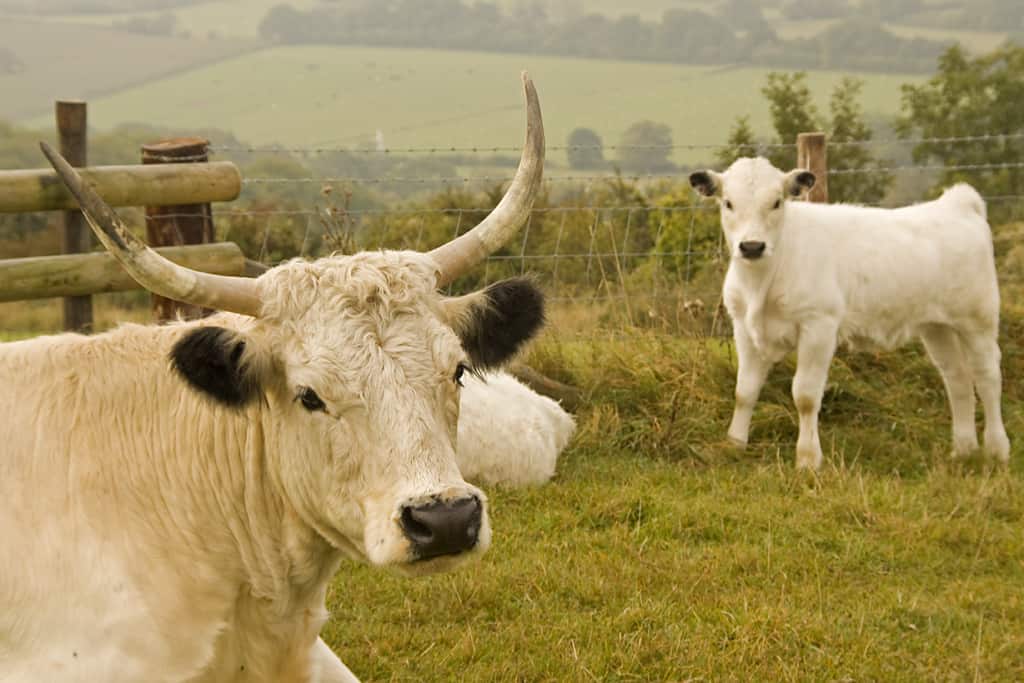
Across the globe, cattle have been bred and cherished for centuries, each breed with its own unique characteristics and heritage. However, some breeds stand out not only for their distinct features but also for their rarity. Read More.
1995 Kennedy Half Dollar Value Guide

The 1995 Kennedy half dollar is made of 25% nickel and 75% copper. However, the 1995 Kennedy 50 cent also comes with a silver-proof version, which is made of 90% silver and 10% copper. Read More.
11 Rarest Barbies in Existence

We’ve been living in a Barbie world since the doll’s 1959 debut, which has offered young children the ability to create and imagine themselves as regal princesses, sharp teachers, capable athletes and more. Read More.
